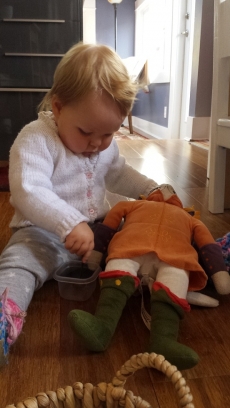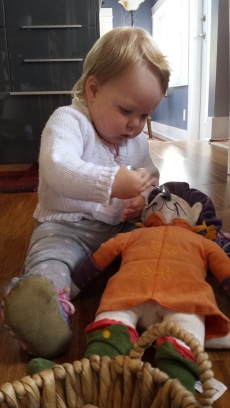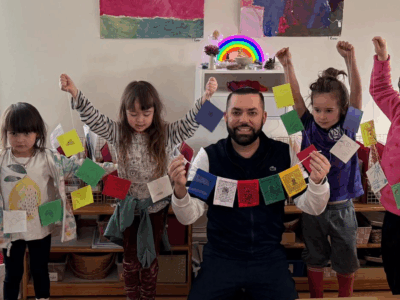Giving Space and Finding Joy

About This Resource
Details
Giving Space and Finding Joy
By Heather Sanche
This article was originally published on Buddhistdoor Global.
Shamatha meditation is the practice of settling the mind into a stable and calm state of present-moment awareness. Once the mind is in such a state, over time insight, or vipassana, naturally arises as the mind begins to experience a conscious awareness of sensations and experiences without any judgmental labels. In some Buddhist traditions shamatha is linked with vipassana from the start, while in others, shamatha is taught by itself and instructions for vipassana are given only once the mind is stable.
In my experience as a nun in a Burmese forest monastery, shamatha was taught first, and the novice nuns were instructed to place our awareness on the sensation of the breath coming in and out of the nostrils. We sat for eight to ten hours a day in scorching heat. During the first few days, my bones and joints hurt tremendously. Standing up and moving after sitting on a thin vinyl mat for hours was excruciating. In the evenings I would be eager to lie down to sleep, but after only a few minutes’ rest my hips would start to burn as the hard wooden platform I called my bed seemed a far cry from the soft bed I had been imagining during my meditation. I certainly wasn’t experiencing any naturally arising states of non-judgment; rather, I struggled with all kinds of judgments about everything, from not eating after noon to waking up at 3.00 a.m. every morning to chant and begin the day’s meditation. And yet, after the first months, from time to time I did start to experience an interesting state of mind—I would arise from the meditation practice with a sense of lightness and joy. I once asked the meditation instructor about this shift in my practice, and he gently smiled and said simply, “keep going.”
In both the Waldorf and Montessori approaches to education, an emphasis is placed on giving children space—space to engage in their tasks or play without too much adult intervention or comment. As a teacher, the discipline of observing and knowing when to move in and when to give space takes time and practice. When a child is working on an activity or deeply engaged in play, it is all too easy to make remarks such as “nice work,” “good job,” or “well done.” These seemingly benign comments break the child’s concentration, and in fact keep the child from experiencing a calm and stable mind. On the other hand, when a young child is given the space and time to engage in an activity deeply, they can emerge from their contemplative state on their own, which gives rise to a sense of joy and fulfillment naturally.
The Montessori and Waldorf approaches to teacher-training place great importance on this aspect of working with children. It is the teacher’s job to know when to give assistance and when to step back and let the children settle into their “work.” Many of the Montessori materials have a built-in “control of error” so that when engaged in an activity, children will notice from the materials themselves whether they have completed the activity correctly or not. It is not the teacher’s job to point out to the young child what they have or haven’t done correctly; rather, it is the teacher’s responsibility to step back and allow the children to continue and discover whether they have completed a task correctly or not. Over the years, I have been amazed to observe how children who are allowed the freedom to concentrate for extended periods of time will arise from the experience with an inherent joyfulness and contentment. I have also observed, in classrooms where children were not given this space, how unsettled and cantankerous the children were. This apparently innocuous habit of adults to comment and give excessive praise can also pull the child away from experiencing a job well done for its own sake, and instead encourage a need for external praise in order to feel a sense of accomplishment.


Reflecting on my own experience of how that deep sense of joy and contentment arose from long, sustained periods of meditative concentration, I have come to trust the need to be attentive or sensitive to and even somewhat protective of a child’s concentration. I had made a container with a small hole at the top, just wide enough so that a thin birthday candle could be slipped through, for one of Adelaide’s friends who is almost a year older than her, and left it on the shelf where Adelaide’s toys and activities are kept out for her to choose to work or play with. One rainy afternoon, I noticed Adelaide take it off the shelf. My first impulse was to go and take it from her, afraid that she would either eat the candles or that it would be much too difficult and frustrating for her to try to slip them through the small hole. Thankfully I paused for a moment before stepping in to redirect her to another activity, and she amazed me when her first attempt to put a candle into the container was successful. There were around ten candles in all, and Adelaide sat up very straight and slowly, one by one, put them all into the container. I was stunned, as I hadn’t thought she had the fine motor skills yet to complete such a task. Had I been too quick to step in, I might have missed this opportunity to observe Adelaide’s ability and interrupted her concentration, which was extraordinary to watch. After the candles were all inside, she joyfully shook the container and bobbed up and down with a sense of accomplishment. She then put the container into the empty wooden bowl that the candles had been in and turned towards me. I simply smiled and went back to doing the dishes, and she crawled back to the shelf to find another activity to engage with.
I thought back to my instructor at the forest monastery and all the wisdom in his simple smile and instruction to just “keep going” that day I first enquired about the effects of the mind settling into itself. Had he grown excited and exclaimed “Wonderful!,” and launched into a long explanation about what might have been happening in my practice, I would have gotten completely distracted and sidetracked into looking for results in my next sessions. His wisdom in encouraging my meditation merely with a spacious smile has since served as an inspiration and as a guide, showing me how effective just a smile can be in encouraging Adelaide’s growing abilities to focus and concentrate, and hopefully in supporting her to discover for herself a calm and joyful mind.

